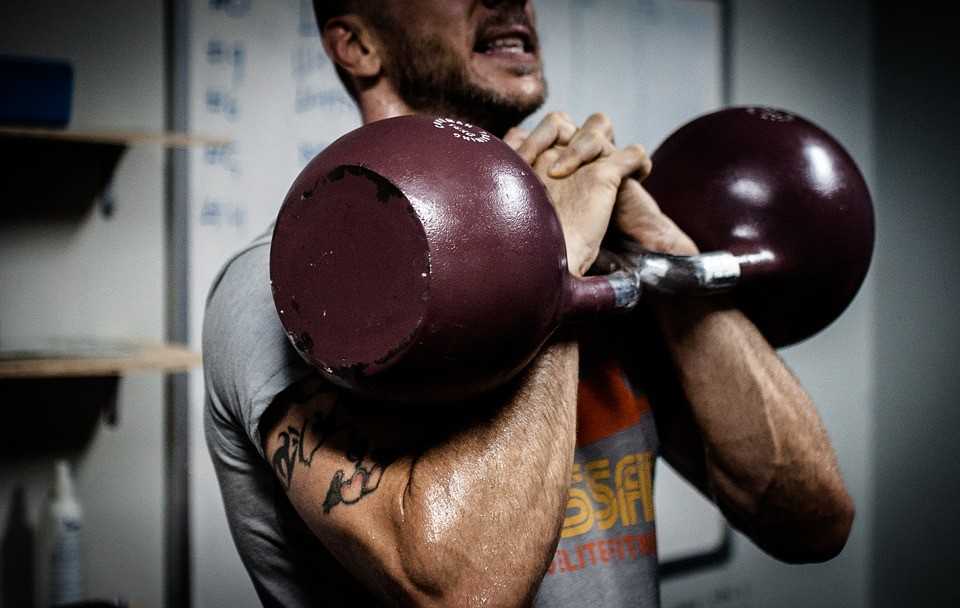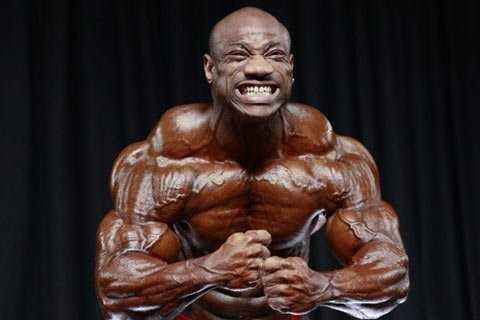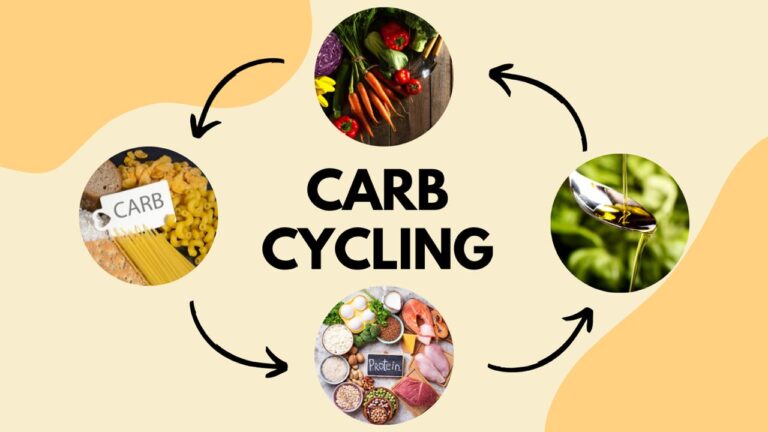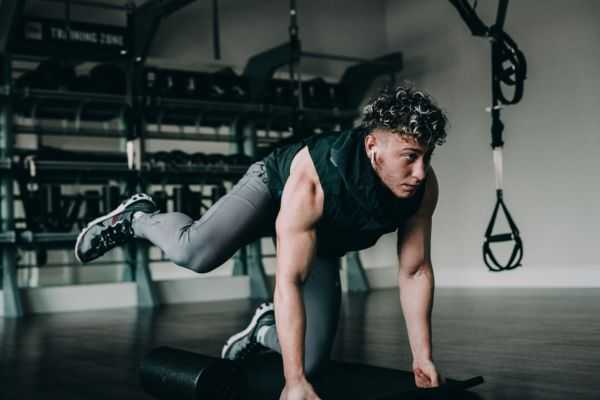When people tell me that they spend 2-4hrs in the gym each day, I just listen and wonder, what the hell have they been doing for such a long period of time?

In this article, I’ll clear this myth of yours’. We would be focusing on strength training only, as endurance training workouts are generally longer lasting, especially in long distance sports like marathons, cross-country, triathlons etc. Also, there are tons of other variables which we will keep out of the scope of the article.
The entire article can be summed up in one line, by world renown coach Charles Poliquin, “If you are in the gym for longer than an hour, then you’re not training. You’re just making friends.”
This is a great advice for a beginner, or time wasters in the gym, but not a go to advice for everyone. This is because there are tons of ifs and buts in between, to come to the right conclusion. For e.g. what do we mean by timing as such:
- Is it the time of just workout, minus the total warmup?
- Is it the time spent in the working sets, minus the warmup sets?
- Is it the time used to do the exercises only, and not the resting time between the sets?
- Is it the total time comprising of everything, including the warmup?
- What about the time spent, waiting for your turn on a machine, or searching for a dumbbell?
- What about the time spent in the washroom chatting with your friends, discussing the next big supplement, which will turn you into an overnight sensation?
- Is the time spent on your cellphone in the gym included?
- Are the sets, in which your focus is more on the cricket match on the screen, or the girl/boy working out next to you, counted?
There are many such variables to be considered before we think of the total time you spend working out. But taking the above situations in mind, when we talk about the time spent, we mean the time spent from starting your actual workout, to the end of your workout, in a focused manner.
So, your warmup is not a part of your overall workout timing. If you are doing long mobility work with foam rollers, then performing general warmup, followed by the dynamic or activity specific warmup, that’s your problem. For me, it’s the activity specific warmup which actually counts, and generally does not take more than 10min to perform. Even that won’t be considered a part of the total actual workout performed. The warmup sets, and the working sets are part of the actual workout only.
Now, if you are waiting for a machine, because there is a queue behind it, then you are at fault. There is no reason to stand behind an exercise station, if there is more than one person on the machine. There are tons of variations out there, change the exercise sequence, if its wasting your time.
Also, ogling at girls, watching television, attending phone calls, chatting with your friends (as if you may never meet them again), has nothing to do with your workout time.

Now comes other variables to consider:
- How much time a beginner, intermediate athlete and advance athlete needs to finish a workout?
- Who is working out for what goal? Is it kids, elderly, women, pregnant women, diseased individual, pro sportsmen etc.?
- Which body part are you working out?
- Are you a high-volume guy, or a high intensity guy?
- Are you taking anabolic steroids?
- Do you have that much luxury in life, that you can spend hours in the gym?
- How much rest you need between sets?
- Have you planned your workout, or is it ‘everything at a time’ approach?
A beginner may be able to wrap up the workout much faster in may be 30min or so, out of exhaustion. The intermediate guy may take more time up to an hour, if working out judiciously. An advance athlete, is advance not just because of number of years he had spent training, but also because of the wisdom he has gained in understanding the needs of his own body, and ignoring the crappy information out there in the market. The advance athlete may never go over 45min-60min of total workout, because of specific, time bound and intense workout, unlike an intermediate guy, who wants to try everything he can lay his hands on, in a single workout.
As I said earlier also that there are too many variables to consider here, which we will not discuss in this article. Like workouts for kids, elderly, women, pregnant women, diseased individual, pro sportsmen etc. are all different, for which various international guidelines are there, but here we will discuss just to the point query of how much time should you spend in the gym, for a single workout.
The story changes completely when you are on steroids. The recovery increases multifold and so does strength. So, your workout can last a bit longer. But even then, when it comes to hypertrophy workouts, it’s better to do two short sessions in a day, rather than a never ending one.
Working out everything, will give you nothing. Let’s say you are doing a chest and bicep workout. The stupid workouts I have seen people doing, and even coaches recommend, comprising of: flat bench press, incline bench press, decline bench press, flat dumbbell, decline dumbbell and incline dumbbell press, dumbbell flyes, cable crossovers, pec dec flye etc. This along with at least 4 or more exercises of biceps. That’s not just useless, but a very wrong approach. That’s a classic way of wasting time in the gym, and actually shortening your gains. The high intensity workouts are short, intense and brutal, finish and go home.
Most people are way too busy in life to even come regularly to the gym. Working out for hours together is not just completely out of question, but also unnecessary. The workout for them, must be short and intense.
The rest between sets depend on the intensity of the workout. If the amount of weight lifted is much more, then the rest between sets will increase. The rest may go up to 3-5min or more when doing extremely heavy workouts, like 1-3RM. But that’s never the norm. The client interested in hypertrophy, takes not more than 1-2min rest, and generally doesn’t go below 6RM in working sets.
A big myth relating to workout timing is that, post 45-60min of intense training, the testosterone levels start dropping and the cortisol levels start rising, because of which there is a catabolic effect on the muscle, and it inhibits muscle recovery. However, this was more of a marketing strategy, than the real truth.
A study, examined the anabolic hormone and growth factor responses to various heavy resistance exercise protocols (HREPs), nine male subjects performed each of six assigned HREPs, which consisted of identically ordered exercises carefully designed to control for load [5 vs. 10 repetitions maximum (RM)], rest period length (1 vs. 3 min), and total work effects; at 0, 5, 15, 30, 60, 90, and 120 min post-exercise. Researchers found that, all HREPs produced significant temporal increases in serum T concentrations.

Another study, investigated associations between acute exercise-induced hormone responses and adaptations to high intensity resistance training in 56 young men. Acute post-exercise serum growth hormone (GH), free testosterone, insulin-like growth factor (IGF-1) and cortisol responses were determined following an acute intense leg resistance exercise routine at the midpoint of a 12-week resistance exercise training study. Acute hormonal responses were correlated with gains in lean body mass (LBM), muscle fibre cross-sectional area (CSA) and leg press strength.
The researchers found no association between the acute response of any hormone and increase in leg press strength. There was no association between GH or testosterone and the increase in LBM, and thus the acute exercise-induced systemic hormonal responses of cortisol and GH are weakly correlated with resistance training-induced changes in fibre CSA and LBM.
Cortisol, about which most people cry out without even understanding it, is actually an extremely beneficial hormone. The study showed that, there was a weak but significant link between the rise in cortisol and gains in lean body mass, as well as the growth of the type II muscle fibres. In other words, subjects with the biggest rise in cortisol levels were also the ones who gained the most muscle.
This takes care of the theory of test levels dropping & cortisol rising after 45-60min of workout.
Acc. to a study, post exercise, various hormones have been shown to alter the dynamic balance between anabolic and catabolic stimuli in muscle, helping to mediate an increase or decrease in muscle protein synthesis. Resistance training can have an acute impact on the post-exercise secretion of several of these hormones including insulin-like growth factor, testosterone, and growth hormone (GH).
Study stated that, “Research is contradictory as to whether or not the post- exercise anabolic hormonal response associated with metabolic stress plays a role in skeletal muscle hypertrophy. Given the inconsistencies between studies, any attempts to draw definitive conclusions on the subject would be pre- mature at this time…
Another possibility to consider is that genetic factors may influence a person’s response to post-exercise hormonal elevations. It has been estimated that genetic differences can account for approximately half of the variation in athletic performance. This is consistent with studies showing that the hypertrophic response to resistance training displays tremendous variance between individuals. It is therefore conceivable that acute hormonal responses may be more relevant to certain lifters as opposed to others.”
The entire theory of cortisol shooting up and test levels dipping, post 45-60min of workout, came from the Bulgarian way of training, made famous by Bulgarian Olympic lifting coach Ivan Abadjiev. Ivan was the one to turn the once losing Bulgarian weightlifting team into probably the finest in the world, winning major World, European and Olympic titles (though that had more to do with large planned doping programs, than training multiple times a day).
It was Abadjiev, who gave the concept of training multiple times a day, in short duration workouts, lasting 30-45min. It was his theory about the testosterone:cortisol ratio and the effect it has from prolonged training sessions. He was nicknamed “the Butcher” for the extreme level of dedication and commitment he demanded from his athletes, that’s why the training concept he introduced was more to do with instilling discipline in the athletes, than actual training effects.

The system was copy pasted by certain people in the west blindly, in the sport of bodybuilding, in the early 90s, for better results. Though there is nothing much they gained out of it, except great profits in selling of their books, which popularized these concepts. Books like The Bulgarian Power Burst System & Big Beyond Belief, sold thousands of copies, using the favourite technique of the west, i.e. heavy marketing.
That’s why when someone says 45min or 60min, that’s not a written statement. It’s from a common-sense approach. So, there is no such thing as an optimal workout length. There is only optimal program design.
Strength coach Christian Thibaudeau, suggested that, the energy demands of a workout are related to the volume of work done, not the duration of the session. Someone who does 30 sets of 10 reps in a 60-minute workout will burn more fuel than someone who does 15 sets of 10 reps in a 90-minute workout.
So, the 45-60min recommendation is not at all wrong, but a great average one to consider, when working out in the gym, especially for beginners and intermediate athletes, and even in cases of some advance athletes. But this should not act as a benchmark. You don’t have to set an alarm and drop the dumbbell/barbell at the instance the clock strikes 60min. That’s just an average number for you to focus and have a good workout, in lesser time.
Several times Mr. Olympia Lee Haney famously said, “Stimulate, Don’t Annihilate”. That means, you should have some gas in your tank, when you are done with your workout. Every workout should not be aimed at total failure. That’s where periodization comes in.



